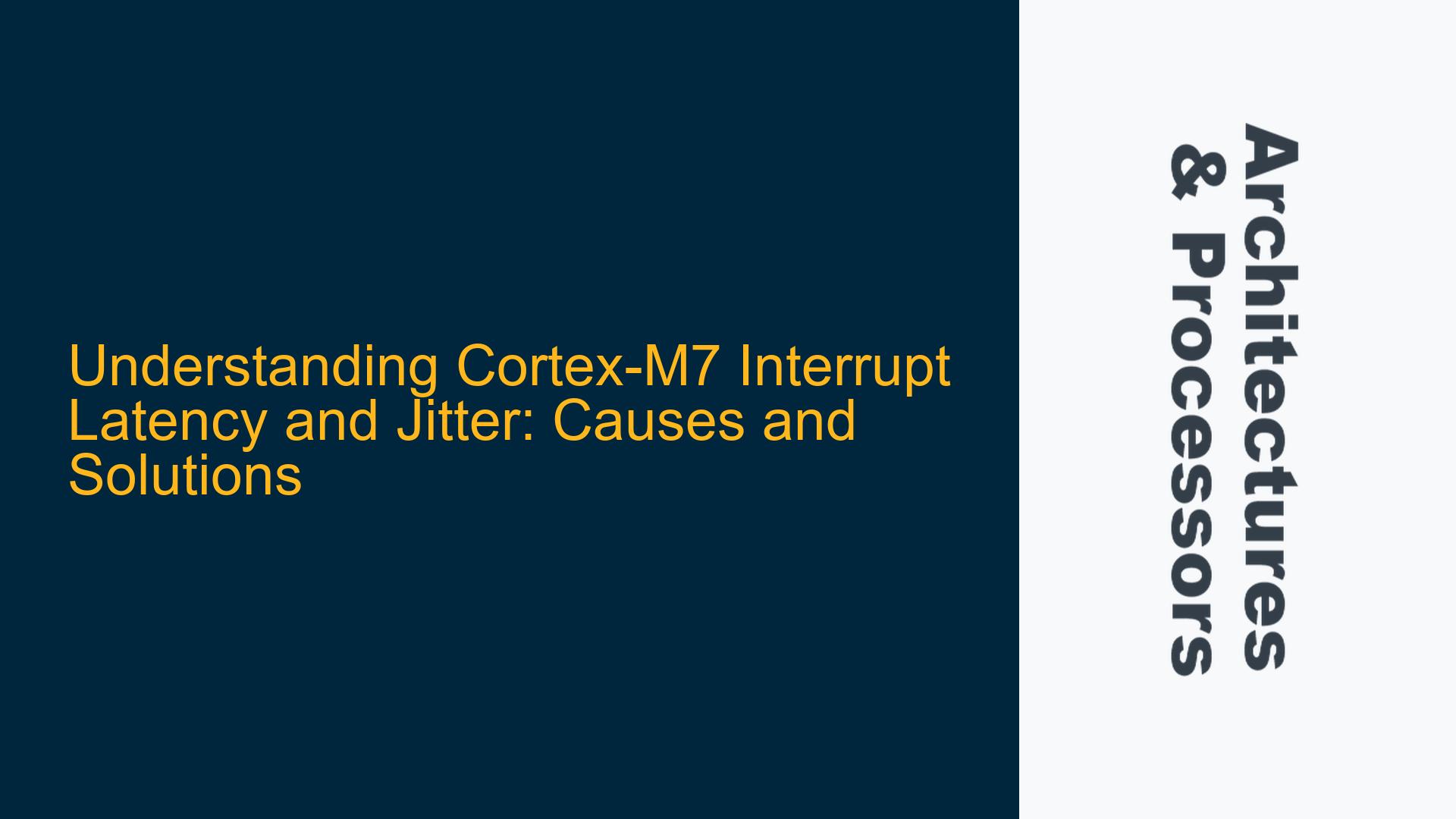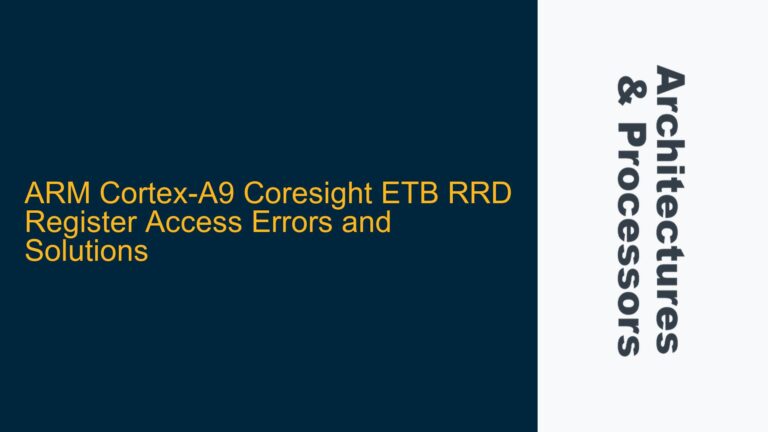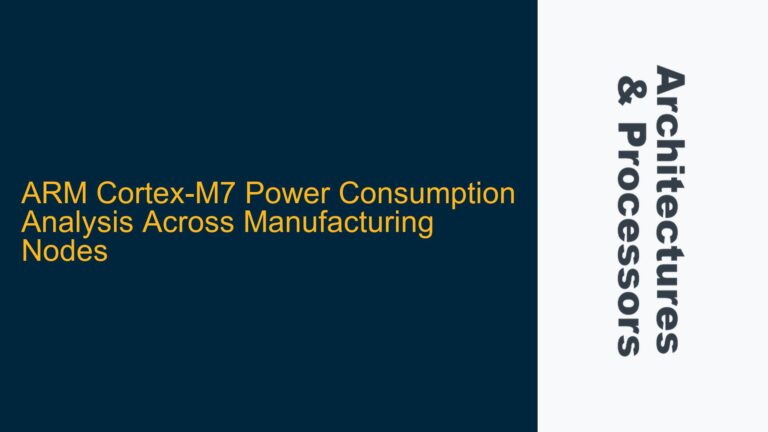Cortex-M7 Interrupt Latency: 12 vs. 14 Clock Cycles
The Cortex-M7 processor, like other members of the Cortex-M family, is designed for deterministic real-time performance. One of the key metrics for real-time systems is interrupt latency, which is the time between the occurrence of an interrupt and the start of the interrupt handler. For the Cortex-M7, the typical interrupt latency is 12 clock cycles, with a worst-case scenario of 14 clock cycles. Understanding the difference between these two values is critical for designing systems with predictable timing behavior.
The 12-cycle latency is the baseline for interrupt response and assumes optimal conditions. However, the worst-case 14-cycle latency occurs under specific circumstances related to the processor’s internal state and memory access patterns. The additional two cycles are not arbitrary; they are tied to the Cortex-M7’s ability to handle multi-cycle instructions and memory transactions. Specifically, the Cortex-M7 can abandon most multi-cycle instructions when an interrupt is recognized, but there are exceptions. These exceptions include load operations from Device or Strongly-ordered memory and shared store exclusive operations that have already started on the AXI interface. These operations cannot be abandoned mid-execution, leading to the additional two cycles of latency.
Device memory and Strongly-ordered memory are special memory types defined in the ARMv7-M architecture. Device memory is used for peripherals and has specific access characteristics, such as non-buffered writes and strict ordering. Strongly-ordered memory is similar but imposes even stricter ordering requirements. When the Cortex-M7 is performing a load operation from these memory types, it must complete the operation before servicing the interrupt, resulting in the worst-case 14-cycle latency.
Additionally, the Cortex-M7’s Auxiliary Control Register (ACTLR) includes a bit called DIS_CRITAXIRUR (Disable Critical AXI Read-Under-Read). When this bit is set, it can improve the worst-case interrupt latency by preventing certain AXI bus transactions from delaying interrupt handling. However, this setting is implementation-dependent and may not be available on all Cortex-M7 devices.
Memory Access Patterns and Stack Alignment Impact
Memory access patterns and stack alignment are two factors that can influence interrupt latency and jitter in the Cortex-M7. The Cortex-M7’s memory system is highly optimized for performance, but certain access patterns can introduce delays. For example, accessing Device or Strongly-ordered memory, as mentioned earlier, can increase interrupt latency. Similarly, misaligned stack pointers can also contribute to jitter.
The Cortex-M7 requires the stack pointer to be aligned to an 8-byte boundary. If the stack pointer is misaligned when an interrupt occurs, the processor must realign it before proceeding with the interrupt handler. This realignment process can add extra cycles to the interrupt latency, contributing to jitter. Ensuring proper stack alignment is therefore essential for minimizing interrupt latency and achieving deterministic behavior.
Another factor to consider is the use of Tightly Coupled Memory (TCM). TCM is a low-latency memory that is directly connected to the Cortex-M7 core, providing fast access to critical data and code. By placing the interrupt handler and its associated data in TCM, developers can reduce the impact of memory access delays on interrupt latency. However, TCM is a limited resource, and its use must be carefully managed to avoid contention and ensure optimal performance.
Implementing Zero-Jitter Interrupt Handling
Achieving zero-jitter interrupt handling on the Cortex-M7 is challenging but possible with careful design. Zero-jitter interrupt handling requires that the interrupt latency be constant, regardless of the processor’s internal state or memory access patterns. This level of determinism is critical for applications such as motor control, audio processing, and real-time communication.
One approach to achieving zero-jitter interrupt handling is to use the Cortex-M7’s Wakeup Interrupt Controller (WIC), if available. The WIC allows the processor to enter deep sleep modes while still being able to respond to interrupts with minimal latency. However, the WIC is an optional feature and may not be present in all Cortex-M7 implementations.
Another approach is to carefully manage the processor’s internal state and memory access patterns. For example, avoiding load operations from Device or Strongly-ordered memory during critical sections of code can help minimize interrupt latency. Similarly, ensuring proper stack alignment and using TCM for critical data and code can reduce jitter.
Finally, developers can use the Cortex-M7’s MPU (Memory Protection Unit) to enforce memory access policies that minimize interrupt latency. For example, the MPU can be configured to prevent access to Device or Strongly-ordered memory during critical sections of code. This approach requires careful planning and testing but can significantly improve the determinism of interrupt handling.
In conclusion, understanding the factors that influence interrupt latency and jitter in the Cortex-M7 is essential for designing real-time systems with predictable timing behavior. By carefully managing memory access patterns, stack alignment, and processor state, developers can achieve low-latency, zero-jitter interrupt handling on the Cortex-M7.






